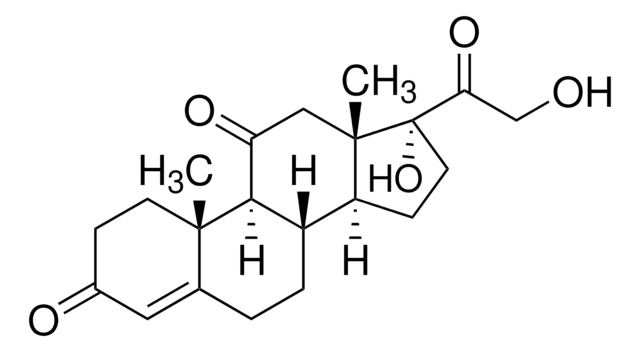C6344
Monoclonal Anti-Connexin-32 antibody produced in mouse
clone CXN-32, ascites fluid, buffered aqueous solution
About This Item
Recommended Products
biological source
mouse
Quality Level
conjugate
unconjugated
antibody form
ascites fluid
antibody product type
primary antibodies
clone
CXN-32, monoclonal
form
buffered aqueous solution
mol wt
antigen 27 kDa
contains
15 mM sodium azide
species reactivity
human, rat, mouse
technique(s)
immunohistochemistry (frozen sections): suitable
indirect ELISA: suitable
microarray: suitable
western blot: 1:1,000 using a mouse whole brain extract
isotype
IgG1
UniProt accession no.
shipped in
dry ice
storage temp.
−20°C
target post-translational modification
unmodified
Gene Information
human ... GJB1(2705) , GJB2(2706)
mouse ... Gjb1(14618)
rat ... Gja1(24392) , Gjb1(29584)
General description
Immunogen
Application
- enzyme linked immunosorbent assay (ELISA)
- immunoblotting
- epifuorescent microscopy
Biochem/physiol Actions
Disclaimer
Not finding the right product?
Try our Product Selector Tool.
Storage Class Code
10 - Combustible liquids
WGK
WGK 3
Flash Point(F)
Not applicable
Flash Point(C)
Not applicable
Certificates of Analysis (COA)
Search for Certificates of Analysis (COA) by entering the products Lot/Batch Number. Lot and Batch Numbers can be found on a product’s label following the words ‘Lot’ or ‘Batch’.
Already Own This Product?
Find documentation for the products that you have recently purchased in the Document Library.
Articles
Cancer research has revealed that the classical model of carcinogenesis, a three step process consisting of initiation, promotion, and progression, is not complete.
Our team of scientists has experience in all areas of research including Life Science, Material Science, Chemical Synthesis, Chromatography, Analytical and many others.
Contact Technical Service